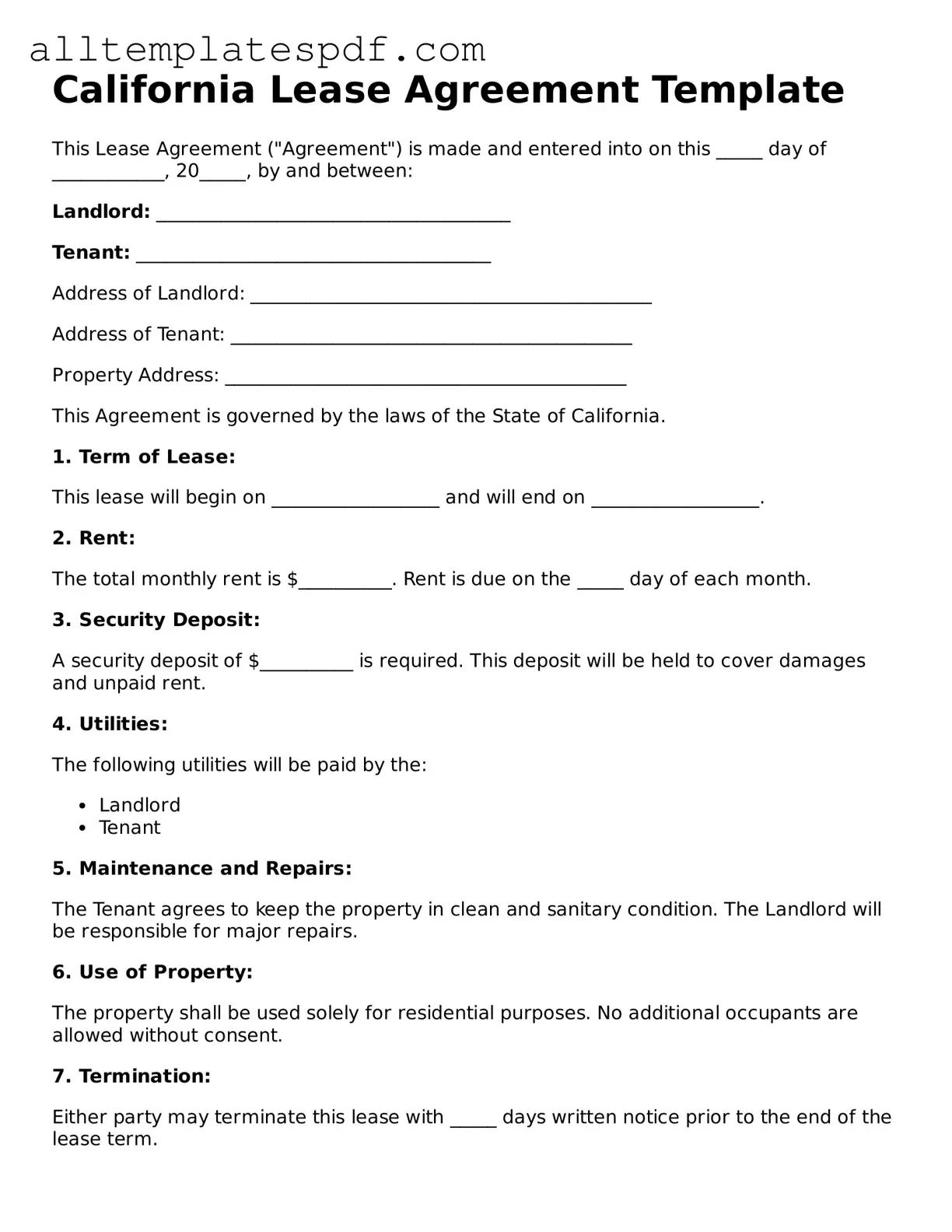Filling out the California Lease Agreement form can be straightforward, yet many people make common mistakes that can lead to complications later. One frequent error is failing to provide accurate personal information. It's essential to include the correct names of all tenants and landlords. Missing or incorrect names can create confusion and may complicate any legal proceedings in the future.
Another mistake is neglecting to specify the lease term. A lease should clearly state whether it is a month-to-month agreement or a fixed-term lease, such as a year. Without this information, both parties might have different interpretations of the agreement, leading to potential disputes.
Many individuals overlook the importance of detailing the rent amount and payment terms. It's crucial to include the exact rent due, the due date, and acceptable payment methods. Omitting this information can result in misunderstandings about payment schedules and late fees.
People often forget to address security deposits properly. The lease should specify the amount of the security deposit, the conditions under which it may be withheld, and the timeline for its return. Lack of clarity on this issue can lead to disagreements when the lease ends.
Another common oversight involves the inclusion of utilities and maintenance responsibilities. The lease should explicitly state which utilities are covered and who is responsible for maintenance. Without this clarity, tenants may assume certain services are included, leading to disputes over unexpected costs.
Inadequate pet policies can also create issues. If pets are allowed, the lease should outline any restrictions, such as breed or size limitations. Conversely, if pets are not allowed, this must be clearly stated to avoid future complications.
Failing to include terms for terminating the lease is another mistake. The agreement should specify the notice period required for termination by either party. Without this information, tenants or landlords may find themselves in a difficult situation when they wish to end the lease.
Many people also neglect to review local laws that may affect the lease. California has specific regulations regarding tenant rights and landlord obligations. Ignoring these can lead to unenforceable clauses or even legal penalties.
Finally, individuals often rush through the signing process. It's vital to read the entire lease thoroughly before signing. Rushing can lead to overlooking important clauses that could impact rights and responsibilities significantly.
